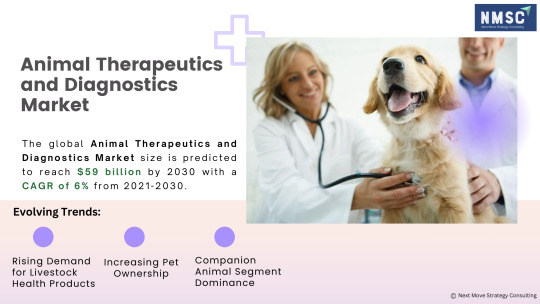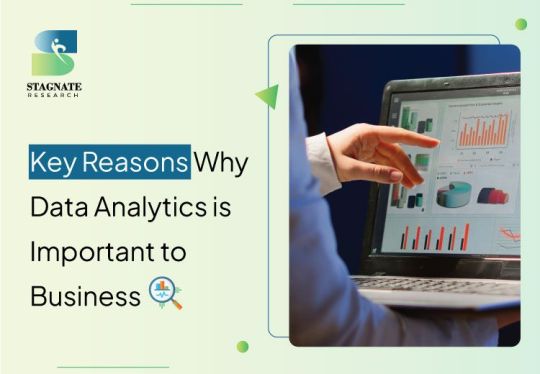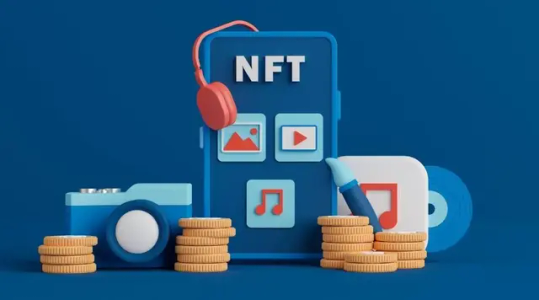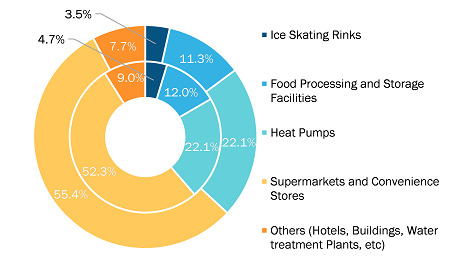#marketresearcher
Explore tagged Tumblr posts
Text

Burden of Multiple Forms of Malnutrition
In many countries, several factors influence the nutritional status of children under 5 years of age; extremes of malnutrition may coexist with a high prevalence of stunting, overweight, and obesity simultaneously. Additionally, a high anemia prevalence could be seen.
Comprehensive nutrition interventions are necessary to address the many effects of malnutrition. The figure below is based on a study of nations that have released estimates for each of the four indicators - wasting, stunting, overweight, and anaemia among women between the ages of 15 and 49 - and children under the age of five.
0 notes
Text

𝐃𝐫𝐢𝐯𝐢𝐧𝐠 𝐏𝐫𝐨𝐠𝐫𝐞𝐬𝐬: 𝐀𝐝𝐯𝐚𝐧𝐜𝐞𝐦𝐞𝐧𝐭𝐬 𝐢𝐧 𝐀𝐧𝐢𝐦𝐚𝐥 𝐓𝐡𝐞𝐫𝐚𝐩𝐞𝐮𝐭𝐢𝐜𝐬 𝐚𝐧𝐝 𝐃𝐢𝐚𝐠𝐧𝐨𝐬𝐭𝐢𝐜𝐬 𝐌𝐚𝐫𝐤𝐞𝐭
As the landscape of animal health continues to evolve, we’re thrilled to see the remarkable advancements in Animal Therapeutics and Diagnostics!
𝐆𝐞𝐭 𝐚 𝐅𝐑𝐄𝐄 𝐒𝐚𝐦𝐩𝐥𝐞: https://www.nextmsc.com/animal-therapeutics-and-diagnostics-market/request-sample?utm_source=sanyukta-14-may-2024&utm_medium=sanyukta-tumblr&utm_campaign=sanyukta-animal-therapeutics-and-diagnostics-market
𝐃𝐢𝐚𝐠𝐧𝐨𝐬𝐭𝐢𝐜 𝐈𝐧𝐧𝐨𝐯𝐚𝐭𝐢𝐨𝐧𝐬:
Cutting-edge diagnostic tools are revolutionizing how we understand and address animal health concerns. From rapid testing kits to advanced imaging technologies, these innovations empower veterinarians and researchers to make informed decisions quickly and accurately. By detecting diseases earlier and with greater precision, we're enhancing the well-being of our furry friends and contributing to a healthier world.
𝐓𝐡𝐞𝐫𝐚𝐩𝐞𝐮𝐭𝐢𝐜 𝐁𝐫𝐞𝐚𝐤𝐭𝐡𝐫𝐨𝐮𝐠𝐡𝐬:
The realm of animal therapeutics is witnessing unprecedented breakthroughs, with novel treatments emerging to address a diverse range of conditions. Whether it's targeted therapies for chronic diseases or innovative approaches to pain management, these advancements are improving the quality of life for animals across the globe. It's inspiring to see how science and compassion intersect to create solutions that make a tangible difference.
𝐆𝐥𝐨𝐛𝐚𝐥 𝐈𝐦𝐩𝐚𝐜𝐭:
The impact of these advancements extends far beyond individual animals; it influences entire ecosystems and strengthens the bond between humans and animals. By promoting the health and well-being of our animal companions, we're safeguarding biodiversity, supporting sustainable agriculture, and enhancing public health. Together, we're shaping a brighter future for all living beings.
𝐊𝐞𝐲 𝐏𝐥𝐚𝐲𝐞𝐫𝐬:
The animal therapeutics and diagnostics industry consist of a number of major players including BioNote Inc, Heska Corp, IDEXX Laboratories Inc, IDvet, Randox Laboratories Ltd., SWISSAVANS AG, Teco Diagnostics, Thermo Fisher Scientific Inc., Virbac SA, Zoetis Inc., Thermo Fisher Scientific, Inc., bioMérieux S.A., Zoetis Inc., Bio-Rad Laboratories, Inc., Medical Bioscience GMBH, and Agrolabo SpA
Let's continue to champion innovation, collaboration, and compassion in the field of Animal Therapeutics and Diagnostics!
Together, we can create a world where every animal receives the care and attention it deserves.
#animalhealth#innovation#veterinarycare#healthcare#technology#markettrends#businessinsights#marketresearch#marketanalysis
10 notes
·
View notes
Text
youtube
The Global Renewable Energy Market in mining is expected to grow significantly, with a projected revenue increase of USD 3.4 billion by 2032, driven by a compound annual growth rate (CAGR) of 8.4% from 2023 to 2032. In 2022, the Asia-Pacific region led the market, holding over 39% of the renewable energy share within the mining sector.
#renewableenergy#renewableenergies#renewablefuture#renewable#renewablerevolution#renewable_energy#renewableinminingindustry#greenenergy#solarsystem#solarenergy#mining#miningindustry#mining_update#miningcoal#miningcompany#marketresearchreport#marketresearch#acumenresearchandconsulting#marketresearchcompany#news#Youtube
2 notes
·
View notes
Text
Your Guide to Success in Quantitative Research: 8 Practical Tips

Quantitative research plays a crucial role in fields like social sciences, business, healthcare, and education. It provides numerical data that can be analyzed statistically to identify patterns, relationships, and trends. However, excelling in quantitative research requires more than just crunching numbers.
1. Start with a Clear Research Question
The foundation of any successful research is a well-defined research question. This question guides the entire study, determining your methodology, data collection, and analysis. Ensure that your research question is specific, measurable, and aligned with the purpose of your study.
For example, instead of asking, "How do students perform in school?" a clearer question might be, "What is the relationship between study hours and academic performance in high school students?"
Tip: Before starting, spend time refining your question. This will save you time and effort during the research process.
2. Choose the Right Research Design
Quantitative research can take many forms, including experiments, surveys, and observational studies. Choosing the right design depends on your research objectives and the type of data you need. Are you testing a hypothesis?
Tip: Match your research design with your objectives to ensure you’re collecting the right kind of data.
3. Use Valid and Reliable Instruments
The tools you use to gather data—whether they’re questionnaires, tests, or measuring devices—must be both valid (measuring what you intend to measure) and reliable (producing consistent results over time).
Tip: If you’re developing your own instrument, pilot it first with a small group to check its validity and reliability. If using an existing tool, review past studies to confirm it works well for your research population.
4. Select an Appropriate Sample Size
A common mistake in quantitative research is working with a sample size that’s too small, which can lead to unreliable or inconclusive results. On the other hand, excessively large samples can waste resources. To avoid these pitfalls, conduct a power analysis to determine the optimal sample size for your study.
Tip: Use tools like G*Power to calculate the right sample size based on your research goals and the expected effect size. This ensures your findings are statistically significant and applicable to a larger population.
5. Ensure Random Sampling for Representativeness
Your findings will only be meaningful if your sample represents the broader population you’re studying. Random sampling ensures that every individual in the population has an equal chance of being selected, reducing bias and increasing the generalizability of your results.
Tip: Use random sampling methods (e.g., simple random sampling, stratified random sampling) to ensure your data is as representative as possible.
6. Minimize Bias in Data Collection
Bias can creep into any research process, affecting the accuracy and fairness of your results. To reduce bias, carefully design your data collection process. For example, avoid leading questions in surveys and standardize how data is collected across all participants to prevent interviewer or observer bias.
Tip: Blind or double-blind studies can help minimize bias, especially in experiments where participants or researchers might be influenced by expectations.
7. Analyze Data Properly with the Right Statistical Tools
Once you’ve collected your data, the next step is analysis. Choosing the right statistical tests is essential to interpret your findings correctly. Descriptive statistics (like means and frequencies) give a broad overview, while inferential statistics (like t-tests, chi-squares, or regression analyses) help determine whether your findings are statistically significant.
Tip: If you’re unsure which test to use, consult a statistician or use resources like statistical decision trees to guide your choice based on your data type and research questions.
8. Interpret Results with Context and Caution
After analyzing your data, it’s tempting to jump to conclusions. However, quantitative research is not just about the numbers; it’s about what those numbers mean in context. Always interpret your results in relation to your research question and the existing body of knowledge.
Be cautious when generalizing your findings, especially if your sample size is small or non-representative. Additionally, consider the limitations of your study—were there any confounding variables, measurement errors, or external factors that might have influenced your results?
Tip: Be transparent about the limitations of your study. Acknowledging them strengthens the credibility of your research.
Conclusion
Mastering quantitative research requires attention to detail, a solid understanding of statistical methods, and a commitment to rigor throughout the process. By following these 8 practical tips—starting with a clear question, choosing the right design, using valid instruments, selecting the appropriate sample, minimizing bias, analyzing correctly, and interpreting results carefully—you’ll be well on your way to conducting successful and impactful quantitative research.
Read more: https://stagnateresearch.com/blog/how-to-excel-in-quantitative-research-8-essential-tips-for-success/
Also read: Project Management Service Company
data processing in research services
#onlineresearch#marketresearch#datacollection#project management#survey research#data collection company#business
3 notes
·
View notes
Text
Microblog: Non-NFT Trading Cards Market on the Rise 🚀
The Non-NFT Trading Cards Market is booming, driven by nostalgia and investment potential. From sports cards to entertainment collectibles, these physical treasures are making a strong comeback. Stay tuned for more insights on this growing market!
For More Details Click Here

2 notes
·
View notes
Text
Steps of Digital Marketing with #UpXpert 🚀
1️⃣ Market Research: Dive deep to understand the market landscape. 2️⃣ Identify Target Audiences: Pinpoint the exact audience that needs your product. 3️⃣ Define Specific Strategies: Craft tailored strategies for maximum impact. 4️⃣ Competitive Analysis: Analyze competitors to stay ahead. 5️⃣ Set Goal Objectives: Clearly define what success looks like. 6️⃣ Determine Evaluation Methods: Measure and track your progress.
📧 Mail us: [email protected] 📞 Call us: +91-7617707771

#DigitalMarketing#MarketResearch#TargetAudience#MarketingStrategy#CompetitiveAnalysis#GoalSetting#PerformanceTracking
2 notes
·
View notes
Text
Is Your Market Research Stuck In The Past? – AI Can Change That
Is your market research outdated and ineffective? Discover how AI can revolutionize your research process. Learn about the benefits of using AI to gather, analyze, and predict market trends. Don't let outdated data hinder your business growth.
#businessstrategy#business#marketingstrategy#data#digitalmarketing#marketing#marketresearch#technology
2 notes
·
View notes
Text
India Pressure Cooker Market Analysis, Size, Share, Growth, Trends, and Forecasts 2023-2030
The India Pressure Cooker market has witnessed a fascinating trajectory, deeply embedded in the culinary culture of the country. This essential kitchen appliance has transcended its functional utility to become an emblematic fixture in Indian households. From the bustling streets of Delhi to the serene villages of Kerala, the pressure cooker stands as a symbol of efficiency and convenience.
Get a Free Sample Report:https://www.metastatinsight.com/request-sample/2548
Who are the largest manufacturers of the India Pressure Cooker Market worldwide?
Hawkins Cookers Limited
TTK Prestige Limited
Butterfly Gandhimathi Appliances Limited
Bajaj Electricals Limited
Stovekraft Limited
Vinod Cookware
Wonderchef Home Appliances Pvt. Ltd.
Elgi Ultra PVT LTD
Sunflame Enterprises Private Limited
Preethi Kitchen Appliances Pvt. Ltd.
Jaipan Industries Limited
United Metalik Private Limited
Bergner Group
Stahl Kitchens
Hamilton Housewares Pvt. Ltd.
In the diverse tapestry of Indian cuisine, where flavors dance with complexity, the pressure cooker emerges as a stalwart companion. Its significance goes beyond the mundane act of cooking; it represents a seamless fusion of tradition and modernity. The rhythmic hiss of steam escaping the pressure cooker has become a reassuring melody, echoing across the kitchens of millions.
Access Full Report @https://www.metastatinsight.com/report/india-pressurecooker-market
The Indian market for pressure cookers is not a mere aggregation of products but a reflection of the diverse preferences and culinary practices that span the length and breadth of the nation. From the compact kitchens of urban apartments to the sprawling setups in rural households, pressure cookers have found their place, adapting to the unique needs of each setting.
This market is not just about metal vessels and rubber gaskets; it’s a testament to innovation. As the demands of the modern consumer evolve, pressure cookers have metamorphosed into sophisticated appliances equipped with advanced features. Digital controls, safety mechanisms, and energy-efficient designs are seamlessly integrated into these culinary workhorses, ensuring they keep pace with the dynamic lifestyle of today’s Indian consumer.
Moreover, the market has seen a surge in eco-conscious designs, with manufacturers increasingly focusing on sustainability. Materials are carefully chosen, and production processes are streamlined to minimize environmental impact. This reflects a growing awareness among both manufacturers and consumers about the need for responsible and sustainable practices.
The India Pressure Cooker market is not just about meeting functional needs; it is a vibrant ecosystem where tradition meets innovation, where utility meets aesthetics. From the aromatic biryanis of Lucknow to the spicy curries of Chennai, pressure cookers have become an integral part of the gastronomic narrative, shaping the way India cooks and savors its diverse culinary delights. In the heart of this market, lies not just an appliance, but a cultural artifact that binds generations, bridging the gap between tradition and modernity in the Indian kitchen.
India Pressure Cooker market is estimated to reach $611.3 Million by 2031; growing at a CAGR of 8.9% from 2024 to 2031.
Contact Us:
+1 214 613 5758
#IndiaPressureCooker#IndiaPressureCookerMarket#IndiaPressureCookerindustry#marketsize#marketgrowth#marketforecast#marketanalysis#marketdemand#marketreport#marketresearch
2 notes
·
View notes
Text
Unlock the Future of Fashion with Our Comprehensive Datasets! 👗✨
Hey Fashion Enthusiasts! 🌟
Are you ready to revolutionize your fashion insights and trends? Look no further! At CrawlFeeds.com, we’re thrilled to introduce our Fashion Datasets, designed to keep you ahead in the ever-evolving world of fashion.
Why Our Fashion Datasets?
Up-to-Date Trends: Stay ahead with the latest fashion trends and consumer preferences.
Comprehensive Insights: Get detailed data on fashion products, pricing, availability, and more.
Market Analysis: Perfect for market research, trend forecasting, and competitive analysis.
What’s Inside?
🔍 Trend Analysis: Discover what's trending across various fashion categories.
💡 Consumer Preferences: Understand what your customers want and tailor your collections accordingly.
📊 Pricing Data: Access comprehensive pricing information to make informed decisions.
🛍️ Product Details: Get detailed descriptions, images, and availability info on a wide range of fashion items.
Who Can Benefit?
Fashion Designers: Stay inspired with fresh trends and consumer insights.
Retailers: Optimize your inventory and pricing strategies.
Marketers: Craft targeted campaigns based on the latest data.
Researchers: Analyze market dynamics and consumer behavior.
Get Started Today!
Don't miss out on the opportunity to elevate your fashion game! Visit CrawlFeeds.com and explore our fashion datasets.
Join the Conversation!
Have questions or want to learn more? Drop us a message or visit our website. Let’s transform the fashion industry together! ✨
2 notes
·
View notes
Text
Revealing Trust: How Transparency is Reshaping B2B

As companies increasingly prioritize trust and open communication, transparency is reshaping the way B2B relationships are built and maintained. This article explores how transparency is transforming the B2B landscape and why it is essential for businesses to embrace this change.
What is Transparency in B2B?
Transparency in B2B refers to the practice of being open, honest, and straightforward in all business dealings. This includes sharing accurate information about products, services, pricing, and processes. Transparency also involves clear communication, admitting mistakes, and providing visibility into the decision-making process. By being transparent, businesses can build trust with their partners, clients, and suppliers, leading to stronger, more collaborative relationships.
Why Transparency Matters
Building Trust: Trust is the foundation of any successful business relationship. When companies are transparent, they demonstrate reliability and integrity, which helps to build trust. Trustworthy partners are more likely to stick around, even when challenges arise.
Improving Collaboration: Transparency fosters open communication, making it easier for businesses to collaborate effectively. When all parties have access to the same information, they can work together more efficiently to solve problems and achieve common goals.
Enhancing Reputation: Businesses that are known for their transparency tend to have better reputations. A strong reputation can attract new clients, partners, and investors, giving the company a competitive edge.
Driving Accountability: Transparent practices encourage accountability. When businesses are open about their actions and decisions, it is easier to hold everyone involved accountable, leading to better performance and results.
How to Implement Transparency in B2B
Clear Communication: This includes everything from marketing materials to contract negotiations. Avoid jargon and be straightforward about what you can and cannot deliver.
Share Information: Make relevant information accessible to your partners and clients. This might include product specifications, pricing structures, and process timelines.
Admit Mistakes: No business is perfect. When mistakes happen, own up to them quickly and provide a plan for resolution.
Engage in Open Dialogue: Foster an environment where feedback is welcomed and valued. Regularly check in with partners and clients to understand their needs and concerns.
Showcase Decision-Making Processes: Provide visibility into how decisions are made within your organization. This can include sharing the criteria for selecting suppliers or the rationale behind pricing changes.
The Future of B2B Transparency
As technology continues to advance, transparency in B2B is likely to become even more important. Digital tools and platforms make it easier to share information and collaborate in real-time, breaking down traditional barriers. Companies that embrace transparency will be better positioned to adapt to these changes and thrive in a rapidly evolving marketplace.
In conclusion, transparency is reshaping the B2B sector by building trust, improving collaboration, enhancing reputations, and driving accountability. Businesses that prioritize transparent practices will not only strengthen their existing relationships but also open the door to new opportunities. Embracing transparency is not just a trend; it is a fundamental shift that is essential for long-term success in the B2B world.
To know more: get paid for surveys
earn money and rewards
2 notes
·
View notes
Text
Optimizing Market Research: Sampling Strategies by Tehrihills Consulting

Introduction -
Sampling is a fundamental aspect of market research, allowing researchers to gain insights into a larger population without having to study each individual within it. At Tehrihills Consulting, we understand the critical role of sampling in facilitating accurate and actionable Market Data Analysis. Our approach integrates advanced techniques to ensure the representativeness and reliability of the data collected in global market research.
Imagine a scenario where a company aims to understand consumer preferences across different demographics for a new product launch. Conducting surveys or studies with the entire population would be impractical and costly. Instead, through strategic sampling, we can select representative samples from each demographic group and analyze their preferences, behaviors, and opinions. This approach not only streamlines the research process but also provides valuable insights that drive informed decision-making.
Sampling is not just about selecting a subset of the population; it's about strategically choosing the right sample to represent the entire population accurately. By leveraging advanced sampling techniques and cutting-edge research methodologies, Tehrihills Consulting ensures that our clients receive accurate, reliable, and actionable insights to fuel their business growth through global data collection and analysis.
Types of sampling: sampling methods -
1. Probability Sampling Methods: Researcher employ specific criteria to randomly select members from a population. Each member within the population has an equal chance of being chosen for inclusion in the sample, ensuring fairness and representativeness. This systematic approach allows Tehrihills Consulting to gather diverse insights from various segments of the target population, driving robust market research and data analysis outcomes.
Simple Random Sampling: Simple random sampling involves selecting elements from a population entirely at random, ensuring each member has an equal chance of being chosen. This method, akin to picking a name out of a hat, offers an unbiased approach to sample selection. For instance, in an organization of 300 employees, each individual has an equal opportunity of being selected for a sample, facilitating comprehensive insights for Tehrihills Consulting's global market research initiatives.
Systematic Sampling: Systematic sampling entails selecting elements at regular intervals from a population after an initial random selection. This method offers flexibility in sample selection intervals, allowing researchers to avoid unintentional clustering. For example, a researcher may choose every 10th individual from a population of 7000 to form a systematic sample, optimizing time and resources for data collection endeavors in global data collection and analysis
Stratified Sampling: Stratified sampling involves dividing a population into distinct groups based on predefined criteria and then selecting samples randomly from each group. This method enables researchers to obtain representative samples from diverse segments of the population. For instance, Tehrihills Consulting may stratify a population based on income levels to analyse consumer behaviours across various income brackets, thereby enhancing the efficacy of Market Data Analysis.
Cluster Sampling: Cluster sampling entails selecting entire groups or clusters from a population rather than individual units. These clusters, such as geographic regions or academic cohorts, are randomly chosen to represent the entire population. By organizing clusters based on demographic parameters, Tehrihills Consulting can derive actionable insights from diverse population segments, facilitating targeted marketing strategies and informed decision-making in global market research.
2. Non-Probability Sampling Methods: The researchers handpick sample participants according to the specific objectives of their research goals. Unlike probability-based approaches, this method lacks a rigid or predetermined selection process, resulting in varying opportunities for different elements of the population to be part of the sample. This flexible methodology enables Tehrihills Consulting to tailor sampling techniques to meet the unique requirements of each research project, ensuring comprehensive and targeted insights for our clients.
Convenience Sampling: Convenience sampling involves selecting samples based on their accessibility and proximity to the researcher. While convenient, this method may introduce bias due to its non-random nature. However, it serves as a pragmatic approach in situations with time and resource constraints, allowing Tehrihills Consulting to gather preliminary insights swiftly.
Quota Sampling: Quota sampling involves setting predetermined quotas for sample attributes, such as gender or age, to ensure representation across target demographics. While quota sampling facilitates demographic diversity in samples, Tehrihills Consulting acknowledges the potential for bias in sample selection and strives to mitigate it through rigorous research market research and data analysis methodologies.
Purposive Sampling: Purposive sampling entails selecting samples based on the researcher's judgment and expertise, focusing on specific characteristics relevant to the research objectives. While purposive sampling may not yield representative samples, it offers a quick and efficient means of obtaining insights tailored to client's market research solutions needs.
Snowball Sampling: Snowball sampling involves recruiting participants through referrals from existing sample members, cascading through interconnected networks like a snowball rolling downhill. This method proves invaluable in reaching elusive populations or addressing sensitive topics, ensuring Tehrihills Consulting's research initiatives encompass diverse perspectives.

Conclusion -
In conclusion, sampling methods serve as the bedrock of market research, enabling Tehrihills Consulting to gather comprehensive data for Global data collection and analysis and Market Data Analysis. By employing a diverse array of sampling techniques, we ensure the accuracy, reliability, and relevance of insights that drive our clients' success. Partner with Tehrihills Consulting for unparalleled market research solutions tailored to your business objectives.
Unlock the power of Market Data Analysis with Tehrihills Consulting – your trusted partner for Market Research and Data Analysis. Explore global data collection and analysis, Conjoint Data Analysis, Decipher survey programming, CATI Market Research & MaxDiff Analysis. Trust Tehrihills Consulting for accurate Global Market Research Analytics, and expert Data Validation. Partner with us for comprehensive market research solutions that leverage advanced Market Data Analysis techniques to propel your business forward.
#market research#survey programming#tehrihillsconsulting#decipher#forsta#survey#researchreports#marketresearch#surveyprogramming#marketresearchsolutions#datavalidation#MaxDiffanalysis#CATImarketresearch#dataanalysis#MarketInsights#customizedresearch#customerinsights
2 notes
·
View notes
Text
What to do to grow a food business?
1. To expand a food business, one must engage in strategic planning, marketing, product development, and customer interaction. Below are steps to help grow your food business:
- Define your niche: Identify what makes your food business unique compared to competitors. Whether it's a special product, a particular cuisine, or a commitment to organic and sustainable ingredients, find your niche and capitalize on it.
- Maintain quality and consistency: Consistently offer top-notch products to establish trust and loyalty with customers. Consistency in flavor, presentation, and service is crucial for retaining current customers and attracting new ones.
- Diversify your product range: Think about expanding your product line to meet various customer preferences and demands. This may involve introducing new menu items, different versions of existing products, or venturing into related food categories.
- Promote your brand: Develop a strong brand identity and marketing plan to boost visibility and draw in customers. Utilize social media, email marketing, and partnerships with influencers or local businesses to reach your target market.
- Interact with customers: Cultivate a devoted customer base by engaging with them online and offline. Respond to feedback, offer promotions or loyalty programs, and create opportunities for customers to connect with your brand.
- Explore new sales avenues: Seek out opportunities to sell your products through different channels like online platforms, grocery stores, food events, or catering services. Diversifying your sales channels can help expand your customer base and revenue.
- Embrace technology: Use technology to streamline operations, enhance efficiency, and improve the customer experience. This could involve implementing online ordering systems, mobile payment options, or investing in kitchen automation.
- Prioritize customer service: Deliver exceptional customer service to ensure a positive experience for your customers. Train your staff to be knowledgeable, friendly, and attentive to customer needs.

#entrepreneurship#startup#smallbusiness#businessdevelopment#businessstrategy#marketresearch#marketanalysis#financialplanning#investment#e-commerce#retail#sales#marketing#digitalmarketing#socialmediamarketing#contentmarketing#branding#customerservice#productdevelopment#supplychain#facebookbusiness#facebookbusinessgrow#growyourbusiness
2 notes
·
View notes
Text
Transcritical CO2 Market Analysis Growth Forecast by 2030

The Insight Partners has unveiled its latest market research offering, providing a comprehensive analysis of the “Transcritical CO2 Market” and growth potential. The report, titled “Transcritical CO2 Market Size, Share and Trends | 2030” is a culmination of extensive research and expert insights, offering valuable information for both dominant market players and bootstrapped startups aiming to make informed decisions in the “Transcritical CO2 Market”.
We are committed to delivering high-quality market research that empowers businesses to thrive in a rapidly evolving market environment. Our research analysts have used top-down, bottom-up, primary, and secondary research approaches to evaluate and approve the market conclusions. The insights presented in the “Transcritical CO2 Market Report” are designed to assist companies in formulating effective strategies for growth and sustainability.
The report offers statistical data such as market share, size, and CAGR estimates. A thorough “Transcritical CO2 Market Analysis” revealed the key companies operating are:
1.TEKO Gesellschaft fur Kaltetechnik mbH
2.Baltimore Aircoil Co
3.BITZER Kuhlmaschinenbau GmbH
4.Carrier Global Corp
5.Danfoss AS
6.Hussmann Corp
7.Emerson Electric Co
8.Panasonic Holdings Corp
9.Evapco LMP Inc
10.Mayekawa Manufacturing Co Ltd and others. This market research is based on data and facts collected from authoritative sources.
Key Highlights of the Report
Uncovering the dynamic forces driving the “Transcritical CO2 Market Growth”, such as economic factors, technological advancements, and regulatory influences.
Understanding consumer behavior by delving into consumer preferences, purchasing patterns, and factors influencing buying decisions.
Breaking down the Transcritical CO2 market into key segments, providing a detailed examination of each segment's “Transcritical CO2 market share”, growth potential, and strategic considerations.
Analyzing regional trends and variations, offering businesses a nuanced understanding of market dynamics in different geographical areas.
Analysis of key players in the market, including their market share, product portfolios, and key strategies.
By combining a strategic approach, advanced methodologies, and a commitment to quality, we strive to set the standard for excellence in market research. Our dedication to innovation ensures that our clients receive insights that drive success in the ever-evolving landscape of any market.
What contributes to the authenticity of this research?
Comprehensive summary of present Transcritical CO2 market condition.
Accurate estimations on market revenue forecasts and CAGR to rationalize resources.
Regional reporting to uncover new markets for business
Competition analysis aims to help corporations in a modest edge.
Facts-based crystal-clear insights for business success.
The research is modified as per business necessities.
Access to PDF, and PPT formats of this research.
Why Choose Customization with The Insight Partners?
Relevance and Precision: Receive insights directly relevant to your operations, enhancing decision-making effectiveness.
Cost-Efficiency: Pay for insights that align with your objectives, optimizing your investment.
Strategic Alignment: Seamlessly integrate findings with existing strategies for enhanced organizational success.
Consumer Trends and Insights
The report captures the latest “Transcritical CO2 market trends”, emerging technologies, and industry shifts, empowering clients to stay ahead of the curve. This section will present insights on brand promotion, product marketing, and target consumers.
Market Segmentation
This market research is based on key segments such as products, end-use industries, and regions. We intend to keep our clients informed about the latest trends in the market, and potential revenue streams for the forecast period.
On the Basis of Application this market is categorized further into-
Ice Skating Rinks
Food Processing & Storage Facilities
Heat Pumps
Supermarkets & Convenience Stores
and Others
On the Basis of Function this market is categorized further into-
Air Conditioning
Refrigeration
and Heating
Key regions Transcritical CO2 Market Research Report:
North America (U.S., Canada, Mexico)
Europe (U.K., France, Germany, Spain, Italy, Central & Eastern Europe, CIS)
Asia Pacific (China, Japan, South Korea, ASEAN, India, Rest of Asia Pacific)
Latin America (Brazil, Rest of Latin America)
The Middle East and Africa (Turkey, GCC, Rest of the Middle East and Africa)
Rest of the World
Published by -
Rohan Gosavi
Senior Market Research Expert at The Insight Partners
#transcriticalCO2#greencooling#sustainablecooling#tumblr#tumblrposts#tumblrwriting#marketresearch#businessintelligence#industrytrends#marketstrategy
2 notes
·
View notes
Text
youtube
The Global Veterinary Renal Disease Market is on track for substantial growth. It is projected to reach USD 25.8 billion by 2032, with a compound annual growth rate (CAGR) of 5.7% from 2024 to 2032. This upward trajectory is largely driven by the rising prevalence of renal diseases among companion animals, which necessitates effective treatment options and innovative healthcare solutions.
#Veterinaryrenaldisease#Veterinaryrenal#Veterinarydisease#veterinary#pets#pettreatment#healthcare#healthcareresearch#healthcaretreatment#medicalresearch#marketresearchreport#marketresearch#acumenresearchandconsulting#marketresearchcompany#news#Youtube
2 notes
·
View notes
Text
Survey Programming Trends: Adapting to an Ever-Changing Field

In the realm of survey programming, the pace of technological advancement and shifting methodologies is a constant. As organizations and researchers strive to gather actionable insights from diverse populations, staying abreast of the latest trends and adapting to emerging technologies becomes essential. This article delves into the current trends in survey programming and explores how professionals can navigate these changes to enhance their data collection processes and outcomes.
1. Increased Use of Artificial Intelligence and Machine Learning
Artificial Intelligence (AI) and Machine Learning (ML) have made significant inroads into survey programming, transforming the way surveys are designed, administered, and analyzed.
2. Integration of Mobile and Multichannel Surveys
With the majority of people accessing the internet via smartphones and tablets, optimizing surveys for mobile devices is no longer optional—it's a necessity. Moreover, integrating various channels, such as email, SMS, social media, and web-based platforms, ensures that surveys reach a broader audience and accommodate different user preferences.
3. Emphasis on User Experience and Accessibility
Survey programming is increasingly focusing on user experience (UX) and accessibility to ensure that surveys are engaging and inclusive. This includes designing intuitive interfaces, minimizing survey fatigue, and accommodating respondents with disabilities.
4. Enhanced Data Security and Privacy Measures
With growing concerns about data privacy and security, survey programmers are placing greater emphasis on protecting respondent information. Compliance with regulations such as the General Data Protection Regulation (GDPR) and the California Consumer Privacy Act (CCPA) is crucial.
5. Leveraging Real-Time Analytics and Dashboarding
Real-time analytics and dashboarding are revolutionizing how survey data is analyzed and presented. Instead of waiting for post-survey data processing, organizations can now access live data streams and interactive dashboards that provide immediate insights.
6. Incorporation of Gamification and Interactive Elements
To boost engagement and response rates, survey designers are increasingly incorporating gamification and interactive elements. Techniques such as quizzes, polls, and interactive scenarios make surveys more engaging and enjoyable for respondents.
7. Adoption of Advanced Survey Methodologies
Survey methodologies are evolving to include more sophisticated approaches, such as conjoint analysis, discrete choice modeling, and experience sampling methods.
8. Focus on Inclusivity and Cultural Sensitivity
As global surveys become more common, there is a growing emphasis on inclusivity and cultural sensitivity. This involves designing surveys that account for diverse cultural contexts, languages, and social norms.
9. Increased Use of Data Integration and Cross-Platform Analytics
Integrating survey data with other sources, such as CRM systems, social media analytics, and transaction records, provides a more comprehensive view of respondents.
10. Growing Importance of Ethical Considerations
Ethical considerations are becoming more prominent in survey programming. This includes ensuring informed consent, minimizing respondent burden, and being transparent about how data will be used.
Conclusion
Survey programming is an ever-evolving field, driven by technological advancements and shifting methodological trends. By staying informed about the latest developments and adapting to new tools and techniques, survey professionals can enhance the effectiveness of their data collection efforts. Embracing AI and ML, optimizing for mobile and multichannel experiences, focusing on user experience and accessibility, and maintaining high standards of data security and ethical practices are key to navigating the complexities of modern survey programming.
To know more read our latest blog: Navigating Trends: The Ever-Evolving in Survey Programming
Also read: survey programming services company
3 notes
·
View notes
Text
" Dive into the full spectrum of digital marketing with us! From crafting compelling SEO strategies that boost your search engine visibility, to creating engaging Marketing campaigns that resonate with your audience, we cover every angle. Explore the power of email marketing for personalized outreach, leverage pay-per-click ads for instant impact, and utilize content marketing to establish your brand authority. With analytics-driven insights and a creative approach to every platform, we're here to transform your digital presence and drive real results. Let's make your brand the talk of the digital world! #DigitalMarketingRevolution #BrandGrowth📈"

#digitalmarketing#socialmedia#contentcreation#branding#onlinepresence#marketingstrategy#influencermarketing#SEO#SEM#PPC#analytics#digitaladvertising#communityengagement#brandidentity#digitalstrategy#internetmarketing#marketresearch#socialmediamanagement#digitalcontent#brandawareness#onlineadvertising#digitalcampaigns#digitalpresence#webmarketing#contentstrategy#email marketing
2 notes
·
View notes